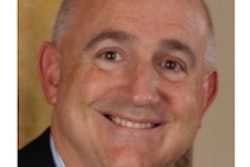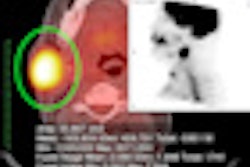
Communication breakdown for critical test results is an important healthcare issue that can negatively affect patient safety, said Dr. Jonathan Berlin in a May 15 presentation at RADExpo 2012: Spring PACS Symposium, an AuntMinnie.com virtual conference.
Radiologists need to do as much as they can to ensure critical results are communicated to and heard by referring doctors -- and even patients. This runs counter to a tendency for radiologists to disengage from critical results reporting once they feel they've done their job, according to Berlin, a clinical associate professor with NorthShore University HealthSystem.
 Dr. Jonathan Berlin.
Dr. Jonathan Berlin."As physicians, we're often under the assumption that we're fine as long as we make the correct interpretation of an exam, but, in fact, that's not the case," he said. "We may think we're shielded from litigation because we assume no one will know [where the communication broke down]. But plaintiff attorneys are on to this -- in fact, one website says that 'more than half of all preventable adverse events occurring soon after hospital discharge have been related to poor communication among providers.' "
What happens?
It's not unusual for a radiologist not to know who to contact with critical test results, which results require communication, or what method of communication is best, Berlin said.
"Who do I call when the ordering provider isn't known? What do I do when it's after hours, or the weekend, or the provider's office is closed and I get an answering machine?" he said. "And sure, if a patient has an acute [pulmonary embolism], we're going to communicate that, but what about chest densities? Do they need to be called in?"
Even when a radiologist knows who to contact with critical test results, there can still be perceptual or language differences or even hospital culture that impedes clear communication, Berlin said.
"Sometimes the ordering doctor's primary language isn't English, or a nurse doesn't want to tell a doctor about significant findings because he thinks that breaks hospital hierarchy," he said. "And of course, there's always the problem of information overload: If an ED doctor is in the middle of three traumas, the reporting radiologist can't always trust that that doctor has understood and assimilated result information."
And while a radiologist might complete and send critical results reports, there's no guarantee that the report will be read, Berlin said, citing one survey in which internists reported at least one significant delay in viewing outpatient tests.
Current guidelines
The American College of Radiology (ACR) has published guidelines for communicating critical test results; these guidelines are intended to educate radiologists rather than to set down absolute standards of care, Berlin said.
"ACR says that in emergent or other nonroutine clinical situations, the diagnosing imager should expedite delivery of the diagnostic imaging report in a manner that reasonably ensures timely receipt of findings," he said. "The fact that a radiologist provides indirect service doesn't justify communication failures."
Courts don't view communication failure cases favorably, and neither do jurors, according to Berlin.
"Jurors may not be able to interpret chest x-rays or MRIs or CT scans, but if they think the radiologist could have picked up the phone and done something more to get those critical results to the referring physician, [they often will make higher awards to plaintiffs] than when the issue is a simple miss."
How can rads 'close the loop'?
The first step in improving critical exam findings communication is being aware of the potential for breakdown, Berlin said. Confirm receipt of the report if possible by making a call and sending an email or a fax -- and document the effort in the patient's medical record.
Electronic medical records can help; some have built-in email programs with a receipt function that tracks when the referring doctor logs on and clicks on the link to the radiology report. Of course, voice-to-voice communication is highly effective, especially when the results are subtle.
"The subtleties of a case may not be communicated by the electronic report," Berlin said. "Voice-to-voice contact is extremely helpful."
"Closed-loop" communication is a technique that attempts to address incomplete understanding of conveyed information: the fact that a doctor may hear clinical results but not understand them. Using the tool of readback/hearback (in which the receiving doctor repeats back what the radiologist has said) can prevent communication breakdowns, according to Berlin.
How far do radiologists need to go with communication follow-up? It depends on the situation, but the guiding principle is to make a reasonable attempt to communicate critical test results: In court cases, what attorneys and jurors are looking for is whether doctors acted out of reasonable standards of care.
"When possible, document receipt of the results and document that you contacted the patient directly," Berlin said. "If you send a report through the mail, send it registered."
As healthcare practice moves toward structures such as accountable care organizations (ACOs) and bundled payments, there's increasing emphasis on collaboration and communication, with both vendors and clinicians becoming savvier about communication technology, Berlin said.
"In a forum like this, we can't guarantee that taking this advice will mean you're never going to be found liable, to get sued," Berlin said. "What it boils down to is radiologists must make their best effort to communicate critical test results to referring physicians and to patients, and document those efforts. Do the best you can -- and most of the time that works."



















